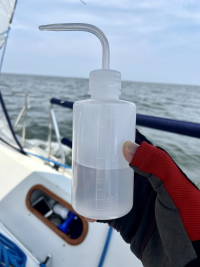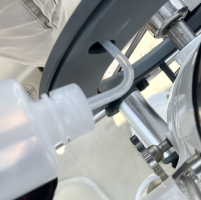The Ray EV-100 Wheel pilot squeaks and the clutch lever sometimes releases unexpectedly.
So?
So?


Understood. However mine was releasing under ideal conditions. Flat seas, light and steady winds and on a close reach. Watching the lever I could see it slowly raise upward until it released. Since lubing the squeaking and releasing seems to have stopped.I read the post you cited (quoted below) . The writer does not understand that wheel pilot is simply not designed to cope with yawing downwind or any significant steering changes. It cannot anticipate, or make sudden powerful corrections. To use a wheel pilot successfully under such conditions (yawing downwind) the course should be changed a little, and sail reduced and adjusted for minimal helm corrections. It is a light duty device. Its range can be extended when attention is paid to reducing helm corrections. If overpowered it will grind its gears or shut itself off.
Have not played with with the lever screw or tension adjustment yet. Unit has been flushed (no salt crystals, I'm on Lake Michigan ).I continue interested (to a fault). Your clutch lever screw is now tight so the lever can resist popping open. Your unit is flushed with fresh water to get any salt crystals out.
Lever pops up. Unit preforms flawlessly otherwise.Does "disengage itself" mean turns off, or that the lever pops up?
Thanks ! I'll settle for a working unit. We leave on a 10 day trip next week.You are conducting valuable research for which there ought to be some kind of merit badge.
Yup... Went to the boat this morning and tightened up that screw. Had a beautiful hands free day of sailingYour clutch lever screw is now tight so the lever can resist popping open.
